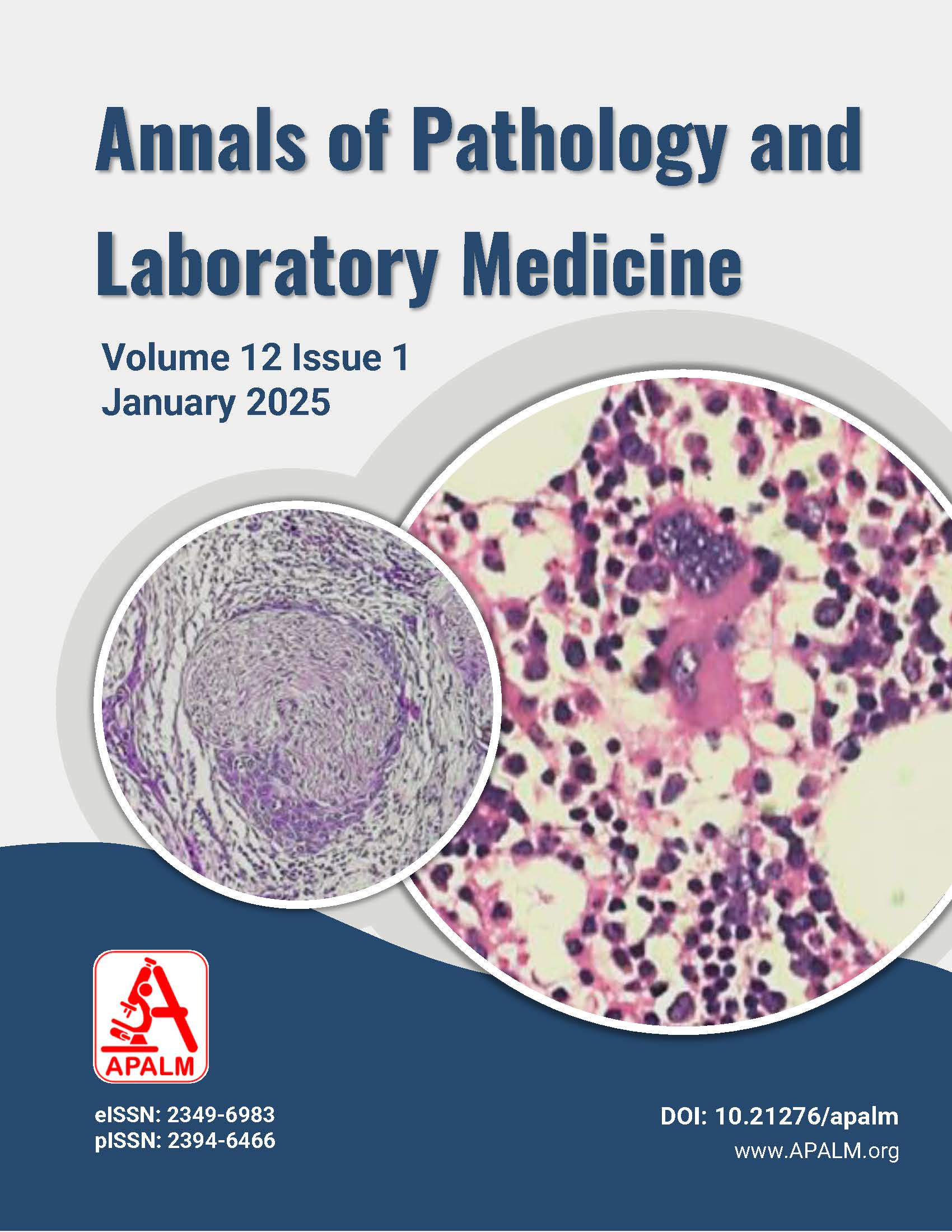Pre-Test Preparation of Patients for Plasma Glucose Estimation: Are We Doing Enough?
DOI:
https://doi.org/10.21276/apalm.3419Keywords:
Pre-analytical phase, blood glucose, Diabetes Mellitus, healthcare professionals, patient compliance, pre-test preparationAbstract
Background: Proper patient preparation is critical for minimizing pre-analytical errors in laboratory testing, yet this aspect is not thoroughly explored. Factors related to both patients and healthcare professionals (HCPs) can significantly impact the accuracy of test results. This study aimed to assess gaps in patients’ understanding and to evaluate the knowledge and communication amongst healthcare professionals regarding pre-test preparation for plasma glucose estimation.
Materials and Methods: This observational, questionnaire-based, cross-sectional study involving patients and healthcare personnel (HCPs) was conducted in the Department of Biochemistry in a tertiary care hospital. The sample size was calculated using the equation: n = Zα²pq / L². The recruitment was from both state and private hospitals and laboratories in the region. Separate questionnaires for patients and HCPs were used. Data was represented as counts and percentages.
Results: A total of 100 patients and 50 HCPs were recruited from the blood collection centers of government hospitals (57% & 84%) and private laboratories (43% & 16%). Among patients, there was poor understanding of instructions for fasting and post-prandial samples. Only a few patients understood and/or were compliant with instructions related to fasting state (18%), diet (6%), drug intake (39%), smoking (14%), and post-prandial sampling (5%). Though HCPs instructed patients to come in a fasting state (98%), they had poor knowledge regarding various other aspects of patient preparation.
Conclusion: Patient preparation was affected due to a lack of proper instructions or poor understanding by the patients. This study highlights many lacunae in knowledge as well as communication that need to be addressed while preparing patients for plasma glucose tests. It emphasizes the need for regular capacity-building exercises and continued medical education modules for HCPs as per international standards. The training modules should also emphasize enhancing communication skills.
References
1. Pradeepa R, Mohan V. Epidemiology of type 2 diabetes in India. Indian J Ophthalmol. 2021;69(11):2932–8.
2. Plebani M. Quality indicators to detect pre-analytical errors in laboratory testing. Clin Biochem Rev. 2012;33(3):85–8.
3. Simundic AM, Lippi G. Preanalytical phase—a continuous challenge for laboratory professionals. Biochem Med (Zagreb). 2012;22(2):145–9.
4. Mehndiratta M, Pasha EH, Chandra N, Almeida EA. Quality indicators for evaluating errors in the preanalytical phase. J Lab Physicians. 2021;13(2):169–74.
5. Classification and diagnosis of diabetes: standards of care in diabetes-2023. Diabetes Care. 2023;46(Suppl 1):S19–40.
6. Diabetes [Internet]. [cited 2022 Jul 18]. Available from: https://www.who.int/health-topics/diabetes
7. Kackov S, Simundic AM, Gatti-Drnic A. Are patients well informed about the fasting requirements for laboratory blood testing? Biochem Med (Zagreb). 2013;23(3):326–31.
8. Miler M, Simundic AM. Low level of adherence to instructions for 24-hour urine collection among hospital outpatients. Biochem Med (Zagreb). 2013;23(3):316–20.
9. Aldasouqi S, Sheikh A, Klosterman P, Kniestedt S, Schubert L, Danker R, et al. Hypoglycemia in patients with diabetes on antidiabetic medications who fast for laboratory tests. Diabetes Care. 2011;34(5):e52.
10. Frati AC, Iniestra F, Ariza CR. Acute effect of cigarette smoking on glucose tolerance and other cardiovascular risk factors. Diabetes Care. 1996;19(2):112–8.
11. Howell RW. Smoking habits and laboratory tests. Lancet. 1970;2(7664):152.
12. Siegel JD, Rhinehart E, Jackson M, Chiarello L. Health care infection control practices advisory committee. 2007 guideline for isolation precautions: preventing transmission of infectious agents in health care settings. Am J Infect Control. 2007;35(10 Suppl 2):S65–164.
13. Bagcchi S. India has low doctor to patient ratio, study finds. BMJ. 2015;351:h5195.
14. McBain RK, Sousa JL, Rose AJ, Baxi SM, Faherty LJ, Taplin C, et al. Impact of Project ECHO models of medical tele-education: a systematic review. J Gen Intern Med. 2019;34(12):2842–57.
Downloads
Published
Issue
Section
License
Copyright (c) 2024 Seema Garg, DEVESH SHARMA, Piyush Chavan, Jancy K Jose, Priyanka Asia, Nilesh Chandra

This work is licensed under a Creative Commons Attribution 4.0 International License.
Authors who publish with this journal agree to the following terms:
- Authors retain copyright and grant the journal right of first publication with the work simultaneously licensed under a Creative Commons Attribution License that allows others to share the work with an acknowledgement of the work's authorship and initial publication in this journal.
- Authors are able to enter into separate, additional contractual arrangements for the non-exclusive distribution of the journal's published version of the work (e.g., post it to an institutional repository or publish it in a book), with an acknowledgement of its initial publication in this journal.
- Authors are permitted and encouraged to post their work online (e.g., in institutional repositories or on their website) prior to and during the submission process, as it can lead to productive exchanges, as well as earlier and greater citation of published work (See The Effect of Open Access at http://opcit.eprints.org/oacitation-biblio.html).










